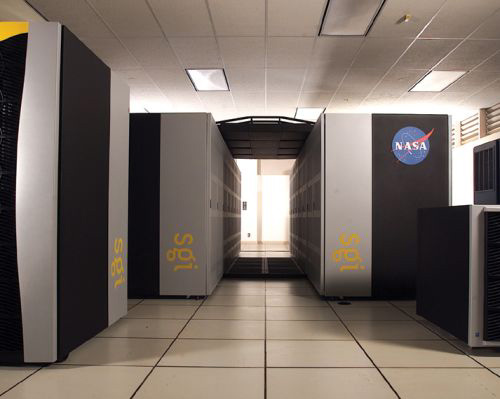NASA supercomputers join fight against coronavirus

As the U.S. scrambles to respond to the spreading COVID-19 pandemic, NASA supercomputers are joining the effort to look for potential treatment and vaccine candidates.
A new initiative brings together NASA and the National Science Foundation as well as a host of Department of Energy laboratories, companies and academic institutions. The White House announced the effort, meant to divert spare computing resources to research aimed at slowing the pandemic, today (March 23).
"I'm proud that @NASA is lending our supercomputing expertise to assist in the global fight against COVID-19," NASA Administrator Jim Bridenstine said in a statement on Twitter. "For more than six decades the agency has used its expertise to take on challenges that have benefited people worldwide in unexpected ways."
Related: Coronavirus prevention measures take their toll on astronomy
One of the areas of NASA redirecting its supercomputer time is the Earth science division, according to Science Mission Directorate head Thomas Zurbuchen. "Researchers input satellite data to run climate models to predict Earth's future climate," Zurbuchen said in a statement on Twitter. "NASA is pleased to lend our supercomputing expertise to assist in the global fight against #COVID19."
Researchers working on projects related to COVID-19 will be able to apply for time on the supercomputers, according to a White House statement, which should speed up calculations necessary for slowing the pandemic.
"America is coming together to fight COVID-19, and that means unleashing the full capacity of our world-class supercomputers to rapidly advance scientific research for treatments and a vaccine," Michael Kratsios, U.S. Chief Technology Officer, said in the statement.
Breaking space news, the latest updates on rocket launches, skywatching events and more!
- Getting sick in space: How would NASA handle an astronaut disease outbreak?
- Dramatic effect of coronavirus lockdowns seen from space
- NASA center in California issues mandatory work-from-home order after employee tests positive for coronavirus
Email Meghan Bartels at mbartels@space.com or follow her @meghanbartels. Follow us on Twitter @Spacedotcom and on Facebook.
OFFER: Save at least 56% with our latest magazine deal!
All About Space magazine takes you on an awe-inspiring journey through our solar system and beyond, from the amazing technology and spacecraft that enables humanity to venture into orbit, to the complexities of space science.

Meghan is a senior writer at Space.com and has more than five years' experience as a science journalist based in New York City. She joined Space.com in July 2018, with previous writing published in outlets including Newsweek and Audubon. Meghan earned an MA in science journalism from New York University and a BA in classics from Georgetown University, and in her free time she enjoys reading and visiting museums. Follow her on Twitter at @meghanbartels.

